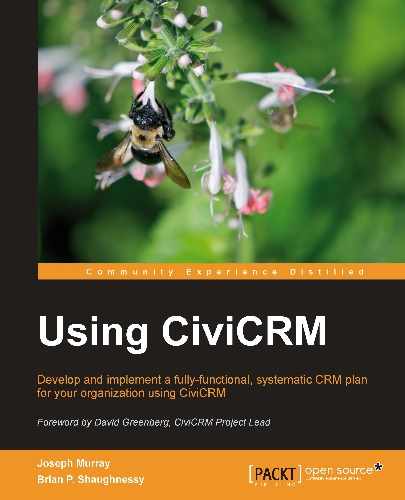In this chapter we looked at:
- The reasons that organizations choose to adopt a CRM strategy
- The importance of considering the work processes as well as the supporting technologies when developing your Constituent Relationship Management strategy
- The ways in which non-profit constituent relationship management is similar to, but different from, business customer relationship management in objectives and techniques
- How to identify and prioritize the constituents and interactions to be managed by your CRM
- When CiviCRM is more appropriate as a tool to support your CRM strategy rather than single purpose tools, custom software development, or other CRM systems
- The common advantages that CiviCRM provides include:
- Better focus on non-profit needs
- Greater user satisfaction
- Avoidance of vendor lock-in
- Excellent integration with popular and powerful Drupal and Joomla! content management systems
- Lower total cost of ownership
- A strong and active development community
- Extensive documentation for all kinds of users
- Good free and paid support
- The benefits your organization will be likely to see when it adopts CiviCRM
It might be tempting to jump in and start installing and configuring CiviCRM and migrating data from your existing systems. However, our experience is that there are great advantages in developing a CRM implementation plan that identifies, at a minimum, your team, your requirements, and the major tasks that will need to be accomplished. The next chapter will walk you through how to develop a CRM implementation plan that is suited to your organization's size, culture, and needs.
..................Content has been hidden....................
You can't read the all page of ebook, please click here login for view all page.
